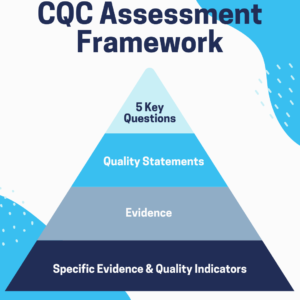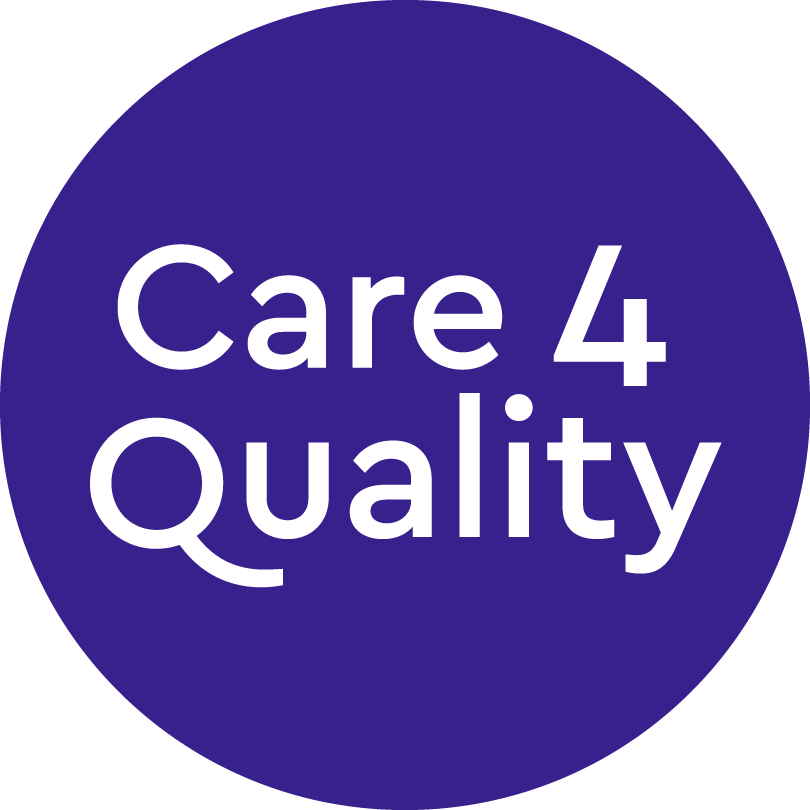The CQC are making significant changes to the way they regulate and inspect Health and Social Care Providers.
This was announced yesterday, 19th March, by the CQC. We have put together the important points regarding these changes, making it as easy as possible for you to understand the new model and how it may affect your service.
1) Single Assessment Framework
To streamline and simplify the assessment process, the CQC will be creating one single assessment framework. This will replace the four individual frameworks currently used to assess all services: Inspection of Social Care, Inspection of Healthcare, Registration of Social Care, and Registration of Healthcare.
The current frameworks are highly elaborate and complex, and there is large amount of duplication across them all. The new single assessment model will contain one overall set of expectations, establishing one clear understanding of what constitutes “quality” care. The criteria outlined within the new assessment framework will be pitched at the level of “good” service, and all providers will be judged based on whether they function above or below this level.
2) Streamlined Key Lines of Enquiry and Questions
The new single assessment framework has been laid out by the CQC in the form of a pyramid, which guides you through the fundamentals of their assessment criteria.

At the top of this are the 5 Key Questions, which ask whether your service is Safe, Effective, Caring, Responsive and Well-Led. These will not change under the new model. However, a new addition to this initial step of assessment is the “I” statements. These are designed to bring the Key Questions to life with regards to what quality, person-centred care looks like, and they are at the heart of the CQC’s approach.
An example of a new “I” statement is: “When I move between services, settings or areas, there is a plan for what happens next and who will do what, and all the practical arrangements are in place.”
Under this in the pyramid, representing the next stage in assessment, are the new “Quality Statements” by which providers are held to account. These will be expressed as “We statements”.
An example of a “We/ Quality” statement is: “We work in partnership with others to establish and maintain safe systems of care in which people’s safety is managed, monitored and assured, especially when they move between different services”
Inspectors will begin their quality assessment with these “We” questions and then move into the first evidence gathering stage – which is next at the pyramid. Currently, there are around 335 individual Key Lines of Enquiry (KLOE’s) and Prompts used by inspectors at the starting point of their assessment stage. While these will remain, the CQC have simplified their initial evidence gathering phase into 6 core elements: people’s experience, feedback from staff and leaders, feedback from partners, observation, processes, outcomes. They no longer plan to start the evidence gathering stage with the KLOE’s- described as “inordinate and dizzying” by Dave James, Head of Policy at the CQC.
The bottom section of the pyramid, representing the final stage of assessment, is specific evidence and quality indicators. This is where the single assessment framework will become more complex and bespoke. Data and information gathered in this stage of inspection will be specific to the scope of assessment, delivery model, or population group.
3) Nature of inspection
Currently, the CQC’s assessment of a service is carried out through inspection alone. This means all evidence is gathered at one key point in time, and 100% of evidence is gathered exclusively through this visit. In the new model, whilst inspections will still be a crucial element of CQC assessment, they will be a part of a broader style of assessment. Site visits will still take place, but the CQC plan to make a more iterative judgment of a service and build up a picture over time through new assessment methods. The CQC have commented that, in the case of local authorities and integrated care systems, site visits won’t necessarily be the core approach to evidence gathering in some cases. Ultimately, their aim is to have more flexibility in how assessment is carried out for individual providers, as they intend to move from the current ‘one-size-fits-all’ method.
4) Timing of inspection
Currently, the frequency of CQC inspections is based on a service’s previous rating, though they do also carry out ongoing monitoring. In line with the new regulatory model, they will be carrying out an ongoing assessment of quality and risk and basing the frequency of inspection more in line with this flexible approach.
5) Turnaround time
The CQC recognises that service providers are often waiting a long amount of time to find out the result of their inspections. Going forward, they plan to streamline the reporting process and therefore improve these turnaround times.
When will these changes take effect?
The CQC have stated that they will continue to work with their partners to develop the new regulatory model further, as it is still in the process of being produced. This means the single assessment model is not yet in effect, and the launch date of this is not currently finalised in public domain.
Going forward, the CQC will be “scenario testing” their new regulatory model both internally and externally in order to see how it works for different sectors.
They encourage both service providers and service users to contact them with any opinions, thoughts, and concerns about the new model. You can sign up and log in to the Citizenlab site to do this now: https://cqc.citizenlab.co/en-GB/projects/cqc-s-future-regulatory-model-where-we-are-and-next-steps
See the Youtube Video by the CQC about these changes by clicking here.
